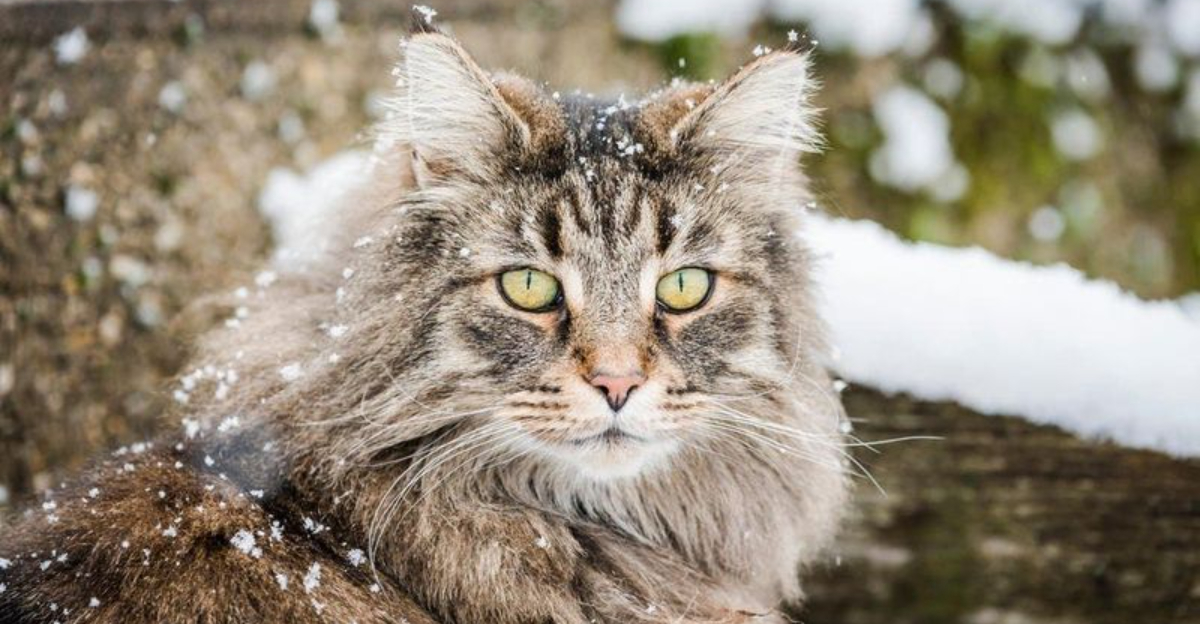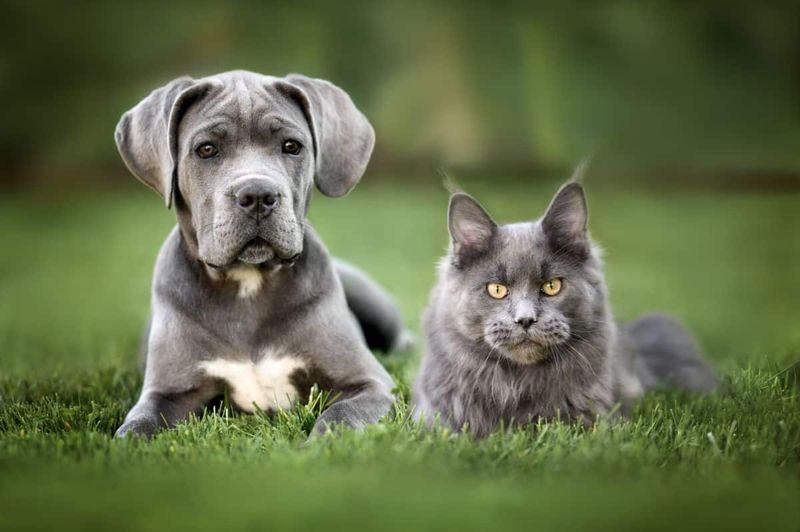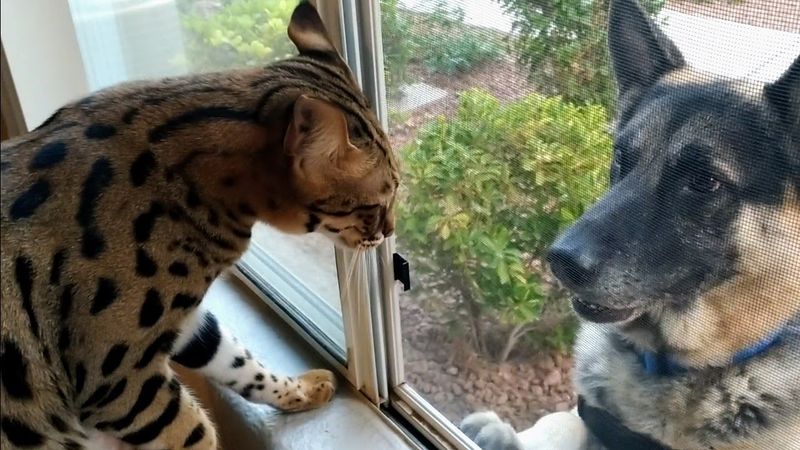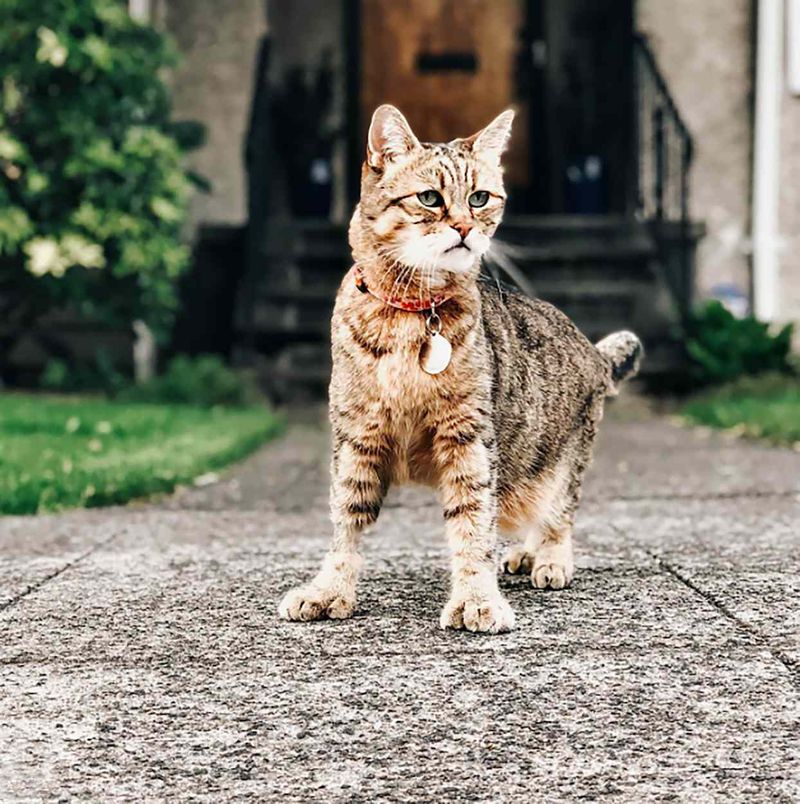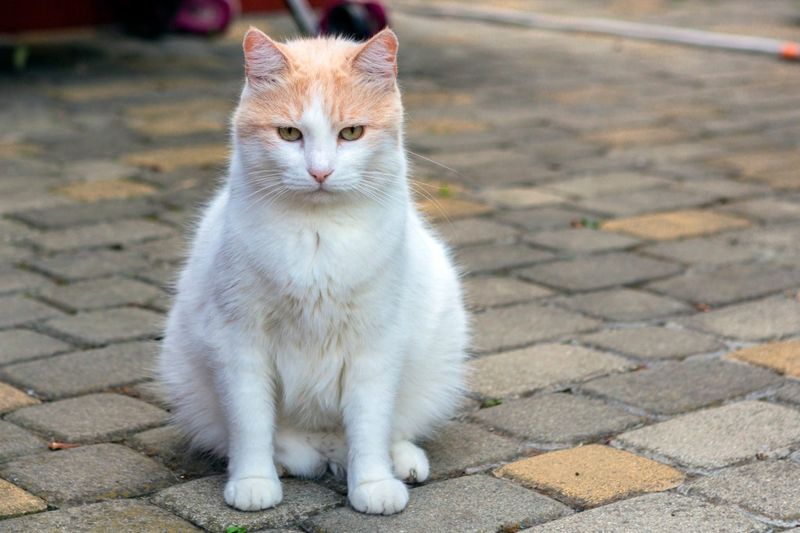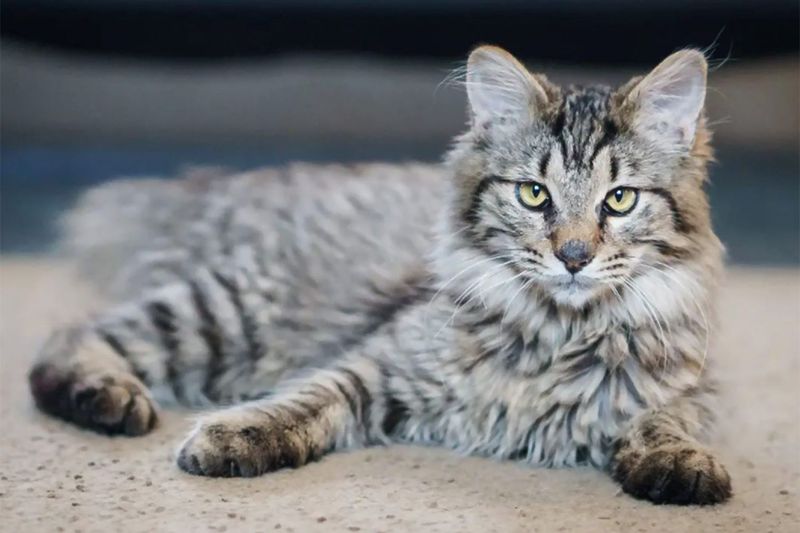📖 Table of Content:
When most people think of powerful pets, dogs are often the first to come to mind. However, there are cat breeds that possess incredible strength and wild instincts that can rival even the fiercest dogs. These impressive felines are equipped with muscles and a commanding presence that demand respect.
While dogs are known for their loyalty and bravery, some cats carry a physical power that challenges the typical pet hierarchy. With a combination of size, strength, and, in some cases, a dominant attitude, these cats are formidable creatures. Their natural abilities often make them stand out, leaving an impression of authority.
The animal kingdom is full of surprising contenders for dominance, and certain cat breeds are definitely among them. These powerful felines might just make dogs think twice about their role as the “alpha” pet. Below are 9 cat breeds whose physical might could give even the bravest dogs a run for their money.
1. Maine Coon
The gentle giants of the cat world can weigh up to 25 pounds and stretch nearly 4 feet long from nose to tail tip. Their muscular build and powerful hunting skills make them formidable opponents despite their friendly personalities.
Maine Coons developed their impressive strength surviving harsh New England winters. Their robust frames and thick coats evolved for survival in snowy conditions.
While they may look intimidating with tufted ears and lynx-like features, Maine Coons are known as “gentle giants” for good reason. They rarely use their strength aggressively, preferring to showcase their power through climbing feats and carrying surprisingly heavy toys in their mouths.
2. Savannah
Half domestic cat, half African serval, Savannahs inherit wild strength and athleticism from their exotic ancestors. First-generation Savannahs can weigh up to 25 pounds and stand taller than many small dog breeds.
Their extraordinary jumping ability—up to 8 feet vertically from a standing position—would make any canine competitor envious. Coupled with lightning-fast reflexes and a predatory instinct, Savannahs command respect.
Dogs often sense the wild heritage in these cats and naturally give them space. Their lean, muscular bodies contain surprising power, and their confident temperament means they rarely back down from confrontation. Many Savannah owners report that neighborhood dogs actively avoid their exotic pets.
3. Norwegian Forest Cat
Born survivors of Scandinavian forests, Norwegian Forest Cats developed powerful muscles for climbing and hunting in snowy terrain. Their strong claws can grip ice and bark with remarkable tenacity, making them exceptional climbers.
These cats boast an impressive weight range of 13-22 pounds, with males sometimes larger. Centuries of natural selection in harsh environments produced a cat with exceptional strength-to-weight ratio.
Their thick double coat makes them appear even more massive than they actually are. Behind those fluffy exteriors lie sturdy frames and powerful shoulders that can propel them through deep snow. Viking legends speak of these cats pulling chariots for the goddess Freya—a testament to their respected strength in Norse culture.
4. Bengal
Athletic prowess defines the Bengal cat, whose wild Asian leopard cat ancestry gives them extraordinary muscle tone and agility. Their powerful hind legs allow for impressive leaps that showcase their raw physical power.
Bengals retain the muscular build of their wild ancestors while adapting to domestic life. Their shoulders and back display rippling muscles beneath their distinctive spotted coats when they move.
A Bengal’s strength becomes particularly evident during play. They can leap extraordinary heights, tackle large toys, and demonstrate surprising power for their medium size. Many Bengal owners install special high shelves and robust cat trees to accommodate their pet’s physical capabilities and natural desire to climb and jump from impressive heights.
5. Siberian
Russia’s national cat developed its impressive physique, surviving Siberian winters where only the strongest survived. Males can weigh between 15-20 pounds of nearly pure muscle beneath their thick, weather-resistant coats.
Their powerful hind legs evolved for hunting in deep snow, allowing them to pounce with tremendous force. A Siberian’s broad chest houses large lungs and a strong heart that support their athletic capabilities.
Siberians possess remarkable strength relative to their size. They can jump great heights from standing positions and maintain balance on narrow surfaces that would challenge other breeds. Their strength isn’t just physical—they show remarkable emotional resilience and adaptability that helped them survive in one of the world’s harshest climates.
6. Chausie
Created by crossing domestic cats with jungle cats, Chausies retain the wild strength and athleticism of their exotic ancestors. Their muscular frames support weights up to 25 pounds, making them one of the largest hybrid breeds.
Chausies possess extraordinary vertical jumping ability—reaching heights of 6 feet or more from a standing position. Their powerful legs and flexible spine contribute to their impressive physical capabilities.
The breed’s strength becomes apparent in their play style, which often resembles hunting behaviors. Their powerful jaws and quick reflexes showcase their predatory heritage. Unlike some strong cats, Chausies remain highly active throughout their lives, maintaining their athletic build well into adulthood rather than becoming sedentary.
7. Pixie-Bob
Don’t let the cute name fool you—Pixie-Bobs pack serious strength into their robust frames. Often mistaken for bobcat hybrids (though they’re fully domestic), these cats can weigh up to 18 pounds with substantial bone structure and muscle mass.
Their powerful shoulders and haunches give them remarkable climbing abilities. Many Pixie-Bob owners report their cats can move surprisingly heavy objects when motivated.
The breed displays polydactyl traits more frequently than other cats, often having extra toes that contribute to their powerful grip. Their sturdy build and determined nature make them formidable hunters. Despite their strength, Pixie-Bobs typically channel their power into play rather than aggression, though they command natural respect from other animals.
8. Turkish Van
Swimming cats might seem unusual, but Turkish Vans developed powerful muscles through their natural affinity for water. Their strong bodies can weigh 16-20 pounds with remarkably dense muscle structure not found in most domestic cats.
Originally from the Lake Van region of Turkey, these cats evolved powerful shoulders and legs for swimming. Their water-resistant coats protect a frame built for both power and endurance.
Turkish Vans mature slowly, reaching full size around five years old—much later than typical house cats. This extended growth period allows them to develop extraordinary muscle density. Their powerful legs can propel them across rooms in a single bound. When they play-fight with dogs, many canines learn quickly that these swimming felines are not to be underestimated.
9. American Bobtail
Rugged and athletic, American Bobtails developed as natural hunters with substantial muscle mass packed into medium-large frames. Males typically weigh 12-16 pounds but feel heavier due to their dense muscle structure.
Their stocky bodies feature broad chests and powerful shoulders that give them exceptional strength for their size. The shortened tail results from a natural genetic mutation, not human intervention.
American Bobtails show their strength through remarkable balance and agility. They can navigate narrow spaces while carrying toys or prey in their mouths—a feat requiring significant core strength. Their powerful back legs allow for impressive jumps. Though they look wild, their temperament is typically friendly, using their strength primarily for play rather than dominance.
